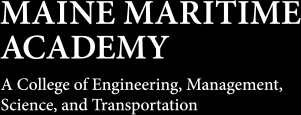Port Director’s Perspective
A 40-year maritime industry veteran, Capt. John Murray ’79 has piloted a successful career from almost every perspective—from deck to wheelhouse, to global commerce and port management.
Since 2016, Murray has been the Canaveral Port Authority CEO and Port Director in Cape Canaveral, Florida.
“We are the world’s second-busiest cruise port in terms of multi-day passenger movements (second only to Miami). Our proximity to Orlando International Airport, Florida’s busiest airport, and the area’s theme parks contribute to our success as a cruise port. But we are also a diversified cargo port with petroleum, aggregates, and lumber among the major imports coming across our docks. And we also have commercial fishing fleets operating here, a public park, campground, beach, boat ramps, restaurants, and more.
“The Port is an important component of the growing commercial space industry, as Elon Musk’s SpaceX started landing boosters three years ago on drone ships offshore that berth in the port.”
Murray has witnessed tremendous changes and growth in the shipping industry, and ironically, the shrinking of the U.S. merchant marine for which he has been a vigorous advocate.
After graduating from MMA with a degree in nautical science, Murray sailed with Lykes Brothers Steamship Co. for eight-and-a-half years, becoming master before heading the company’s port operations in Charleston. He later led regional operations and then overall crew and ship management. He successfully guided the company through Chapter 11 bankruptcy in 1997; its ultimate acquisition by CP Ships; and, over the next eight years, as CP Ships acquired seven more shipping companies before it was acquired by Hapag-Lloyd in 2005.
During his time at Lykes, CP Ships and Hapag-Lloyd, Murray led the U.S. flag subsidiary of the company and its operation of U.S. flagged container ships.
Because of his extensive experience with ocean carriers and their strategic sealift for the U.S. military, Murray addressed Congress in 2016 to provide details on the challenges to sustaining the fleet due to reduced food aid cargoes earmarked for U.S.-flag transport.
“We’re down to about 80 American-flagged deep-sea cargo vessels; 60 of them are in the Maritime Security Program with the balance in the Jones Act domestic trades,” he says.
“In times of national emergency, trained and experienced U.S. mariners are needed, but the size of the American fleet and employment opportunities are not adequate, and the economics of maintaining these ships and a pool of skilled mariners has become more difficult. Year after year, I have seen support chipping away.”
Murray is heartened, though, by MMA’s diversification with programs such as International Business and Logistics (IBL) and Small Vessel Operations. “We’ve had IBL interns from MMA and the other academies at the Port, and I hope to hire some in the future as employees.
“Success in today’s maritime industry isn’t limited to shipboard skills. There are great opportunities ashore for those willing to work hard and apply their classroom learning and experiences to building great maritime careers.”█
photo: Canaveral Port Authority




Post Comment
Comments are moderated and will be reviewed prior to posting online. Please be aware that when you submit a comment, you agree to the following rules:
Maine Maritime Academy reserves the right to delete any comment that does not comply with these guidelines and is not responsible or liable in any way for comments posted by its users. If you have a message for the editor, please email mariner@mma.edu.
Class Notes
View All >Read More
Read More